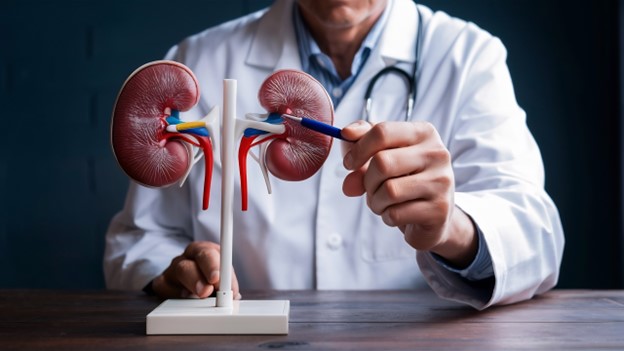In recent years, robotic technology has reshaped many medical fields, and robotic renal transplants are a prime example. For patients with kidney failure, kidney transplants are often the best chance for renewal. But traditional methods come with their own set of challenges. Enter robotic-assisted renal surgeries, which offer a promising alternative for better outcomes. This new approach is revolutionizing the way kidney surgeries are handled, promising less pain and faster recovery for patients.
The Advantages and Innovations of Robotic-Assisted Kidney Transplant
A robotic-assisted renal surgery involves using a machine to help surgeons perform kidney transplants. Unlike traditional surgeries, which require large cuts, this method uses tiny incisions. This makes it a less invasive procedure.
Let’s break down some of the robot-assisted kidney transplant advantages:
- Precision: Robots help surgeons be more precise. This can reduce the chance of errors.
- Minimal Invasion: With smaller cuts, the surgery is less traumatic to the body.
- Faster Recovery: Patients often get better faster as there is less to heal.
In traditional surgery, large cuts mean longer recovery and more pain. In contrast, using robotic technology means smaller cuts and less damage to tissues. This means less pain and quicker healing time.
Innovations in robotic kidney transplant tools are also improving surgery success rates. These tools assist doctors in carrying out complex tasks with ease and accuracy. Such advancements in renal transplant technology ensure that more surgeries end with great success.
Post-Operative Care and Patient Recovery
After a kidney transplant, how you take care of yourself is crucial. This is true for all types of post-operative care for renal transplant patients. Following surgery, robotic technology helps in a big way. It often leads to a shorter recovery time and a better quality of life afterward.
Here are some simple steps for patient recovery after robotic kidney surgery:
- Follow Doctor’s Orders: Always do what your doctor advises about diet and medication.
- Regular Check-Ups: Keep a schedule for regular follow-ups to catch any issues early.
- Healthy Lifestyle: Eating right and staying active can help the new kidney function well.
In India, support systems for post-surgery recovery are robust. From frequent check-ins to dietary advice, help is readily available. These systems ensure that patients regain strength and adjust to their new life with ease.
Robotic Renal Transplants: Future Prospects and Their Impact on Healthcare
The future looks bright for robotic-assisted renal surgery. As technology advances, we can expect even more precise tools. This can mean fewer complications and better long-term outcomes for patients.
Robotic surgeries are already showing fewer complications. They provide patients with a faster recovery time and less post-surgery pain. As more developments happen in robotic surgery for renal transplant, patients continue to see better and more predictable results.
A key issue is making these procedures accessible and affordable for everyone. As technology becomes more common, costs may decrease. This can make minimally invasive renal transplant options open to a broader audience.
In conclusion, the impact of robotic renal transplants on health care is profound. With rising advancements and lower risks, this method offers a better choice for many undergoing kidney surgery. Making this technology more accessible globally can transform healthcare standards and improve lives significantly.


